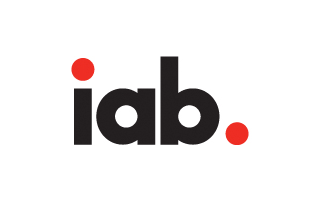IAB Aims to Set Industry Standards for Content Marketing
The Interactive Advertising Bureau has issued a "Primer" to set standards and guidelines for content marketing.
The Interactive Advertising Bureau has issued a "Primer" to set standards and guidelines for content marketing.
The Interactive Advertising Bureau (IAB) is trying once more to step into the game to moderate another type of format used by marketers and agencies in their consumer campaigns: content marketing.
Two weeks ago, the IAB made an attempt to set standards and rules for native advertising, a subset of content marketing. Today, the topic is content marketing itself; the IAB’s task force issued a ‘Primer,’ setting out the basics of content marketing – what, for whom and how.
Content Marketing Clarity

First, a definition is offered.
“Content Marketing is the marketing technique of creating and distributing relevant and valuable content to attract, acquire and engage a clearly defined and understood target audience,” with the intent “to provide useful, educational, or entertaining information on its own merit, without a call to action,” the Primer reads.
Meaning, it has to be user-centric and bring added value to the end-user, who in turn will engage with the brand without being prompted to do anything.
“The only way content marketing can grow and thrive is to put the consumer first while it’s still relatively early in its evolution,” commented Michael Lebowitz, CEO of digital creative agency Big Spaceship.
Content marketing can be used across all three marketing channels: owned, paid and earned media. Content can be original, repurposed and curated.
Interestingly enough, Lebowitz, who also chairs the IAB advisory board, called the Primer “valuable, but fairly topline.” While the IAB has focused on providing a definition, Lebowitz was insistent on how “important it is to have a definition of terms so all the parties – ad tech, creative agency, media agency, publisher and brand – can speak a common language.”
Consumers First?
Content marketing involves groups of populations: publishers/brands, advertisers and consumers (in that order for the IAB – which may highlight a very interesting editorial bias right there, as it is in contradiction to their stated necessity for this specific topic to have the consumer first).
Publishers get to add extra content on a site while monetizing it via paid native ad units, sponsored story features, custom publishing editions, content recommendation widgets, and co-branding.
Advertisers get to engage and to score higher-than-ever ROIs by using a format that is all at once non-invasive, value accretive and engaging.
On the other side of the mirror, consumers are at the receiving end of all three elements above. Largely echoing Lebowitz’s comments, the Primer states that with content marketing, “consumers feel they are in the driver’s seat on what content they consume. Consumers value the less intrusive nature of content marketing which, ideally, leads to a more positive association with the brand and a higher inclination to take action.”
Transparency in Content Marketing
As a washing powder brand says, “Style is optional, clean is not.” For content marketing, style is a matter of options, but transparency is not.
As is the case for native advertising, disclosure is key for content marketing – and logically so, too. The IAB’s guideline for responsible use of content marketing is “Regardless of context, a reasonable consumer should be able to distinguish between what is a paid native advertising unit vs. what is publisher editorial content.”
Consumers hate to be misled or taken for granted. Any lack of such disclosure would spark negative brand association and deter consumers from further engaging and even buying from the brand. Not only is it a double-edged sword, but the edges are pretty sharp, too.
What do you think the future of content marketing looks like?